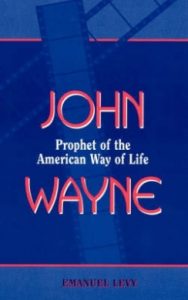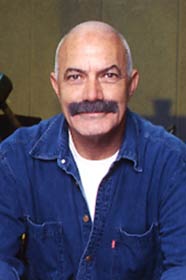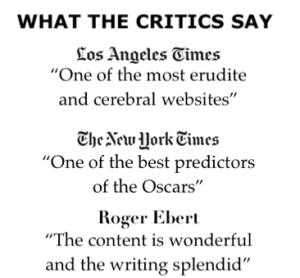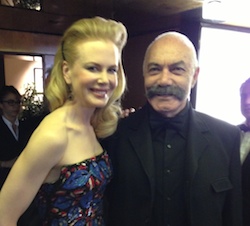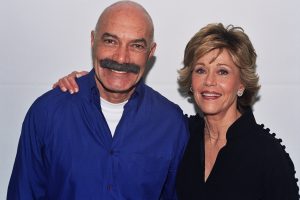The sex image of a movie star is defined, shaped and promoted, among other things, by the kind–and quality–of the screen women he is paired with.
Surprisingly, for the most part, John Wayne’s leading ladies were not Hollywood’s sex goddesses or most beautiful stars.
Clark Gable benefited from his pairing with the brassy Jean Harlow (in the 1930s) or the beautiful Ava Gardner (in the 1950s).
Humphrey Bogart got extra publicity for teaming up with his younger wife, Lauren Bacall, in several films, beginning with To Have and Have Not; the couple became known as Bogey and Baby.
Claire Trevor
Early on, a frequent screen lady of John Wayne was the gifted and versatile actress, Claire Trevor, with whom he made three films, “Stagecoach,” “Allegheny Uprising,” and “Dark Command.”
Many viewers remember them as a team because of the importance of the 1939 “Stagecoach” to the formation of Wayne’s sex appeal and future career.
Marlene Dietrich
Wayne looked extremely good in the three movies he made with Marlene Dietrich in her post-Josef Von Sternberg’s era: “Seven Sinners,” The Spoilers,” and Pittsburgh.”
The contrast between Dietrich’s worldly sophisticated women and Wayne’s shyly awkward men was particularly endearing because it brought out the best of their respective screen personas.
As is well known now, Wayne and Dietrich were also involved in love affair off-screen.
Susan Hayward
Wayne’ s movies with Susan Hayward, “Reap the Wild Wind” and “The Fighting Seabees,” before either of them became a star, did little to promote Wayne’s sex image.
Their last film together, “The Conqueror,” was downright embarrassing. It may be the worst picture in Wayne’s career.
Maureen O’Hara: Wayne’s Favorite Partner
The chemistry between Wayne and Maureen O’Hara worked well from the start, on screen and off–they became close friends.
Wayne described O’Hara her as his favorite screen lady, “a big, lusty, wonderful gal,” in short “my kind of gal.” And she regarded him as “the softest, kindest, warmest, most loyal human being I’ve ever known.”
Their relationship was like “brother and sister,” O’Hara said. They were often mistaken as a romantic pair off screen because of their five films together. O’Hara promoted his public image whenever she could: “Wayne is not interested in anything less than l00 percent woman because he’s 100 percent man.” Or “Duke is what the world thinks the American male is, and what a shame they’re not.” O’Hara said she could not count “the number of places I’ve been where they’ve asked me about Duke,” and that “men want to know as much about him as women.”
In the middle phase of his career, Wayne was cast against young and attractive stars, most notably Angie Dickinson (“Rio Bravo”), Capucine (“North to Alaska”), Elsa Martinelli (“Hatari!”), Donna Reed (“Trouble Along the Way”), and Martha Hyer (The Sons of Katie Elder”).
Wayne’s Stronger and Older Women
In the last decade of his career, Wayne was paired with stronger and older actresses, such as Patricia Neal (“In Harm’s Way”), Colleen Dewhurst (“The Cowboys,” “McQ”), Lauren Bacall (“The Shootist”), and Katharine Hepburn (“Rooster Cogburn”).
Wayne was much more powerful and convincing as an actor when playing against strong-willed and intelligent actresses. His casting against mature women prompted the distinguished film critic Molly Haskell to observe: “How many other maturing male stars have allowed themselves to be paired with women who were roughly their contemporaries, instead of dropping back one generation, then another”
Haskell’s statement is not exactly accurate, for most of Wayne’s co-stars, with the exception of Katharine Hepburn, were at least a generation his juniors. But she is right about the appeal of these stars: none was the typical Hollywood glamour queen.
Wayne was more aware of his progressing age and declining looks than other actors, as he said in 1957: “My problem is I’m not a handsome man like Cary Grant, who will still be handsome at sixty five.” “I may be able to do a few more man-woman things before it’s too late, but then what?” He was determined not to play “silly old man chasing young girls, as some of the stars are doing.”
For the most part, he did not. In only a few movies, Wayne looked ridiculous, courting much younger women, as, for example, in “Donovan’s Reef,” in which his romantic interest was Elizabeth Allen, a former fashion model half his age. Wayne conceded that, “Ford never should have used me in that picture.” “He should have picked some young guy,” he explained, “It didn’t require much of him. All he had to be was a good-looking young guy, and I wasn’t young enough.”
Another movie, exceptional in the incredulous way it treats Wayne’s sex appeal was “McQ,” in which he is pursued by women half his age. Pauline Kael, film critic for the New Yorker, found it absurd that “women are all hot for this sex pot,” and that Colleen Dewhurst, playing a lonely waitress, had to apologize for being fat and ugly before dragging him to bed.
But other critics thought that Wayne still possessed “a more extensive sexual range than younger, ostensibly hipper studs like Paul Newman and Robert Redford.”
Describing Wayne as “the last movie star to make respect sexy,” Newsweek’s Jack Kroll claimed that there was “plenty of eroticism in the Duke, but it’s a friendly eroticism that takes any woman on her own terms.”
